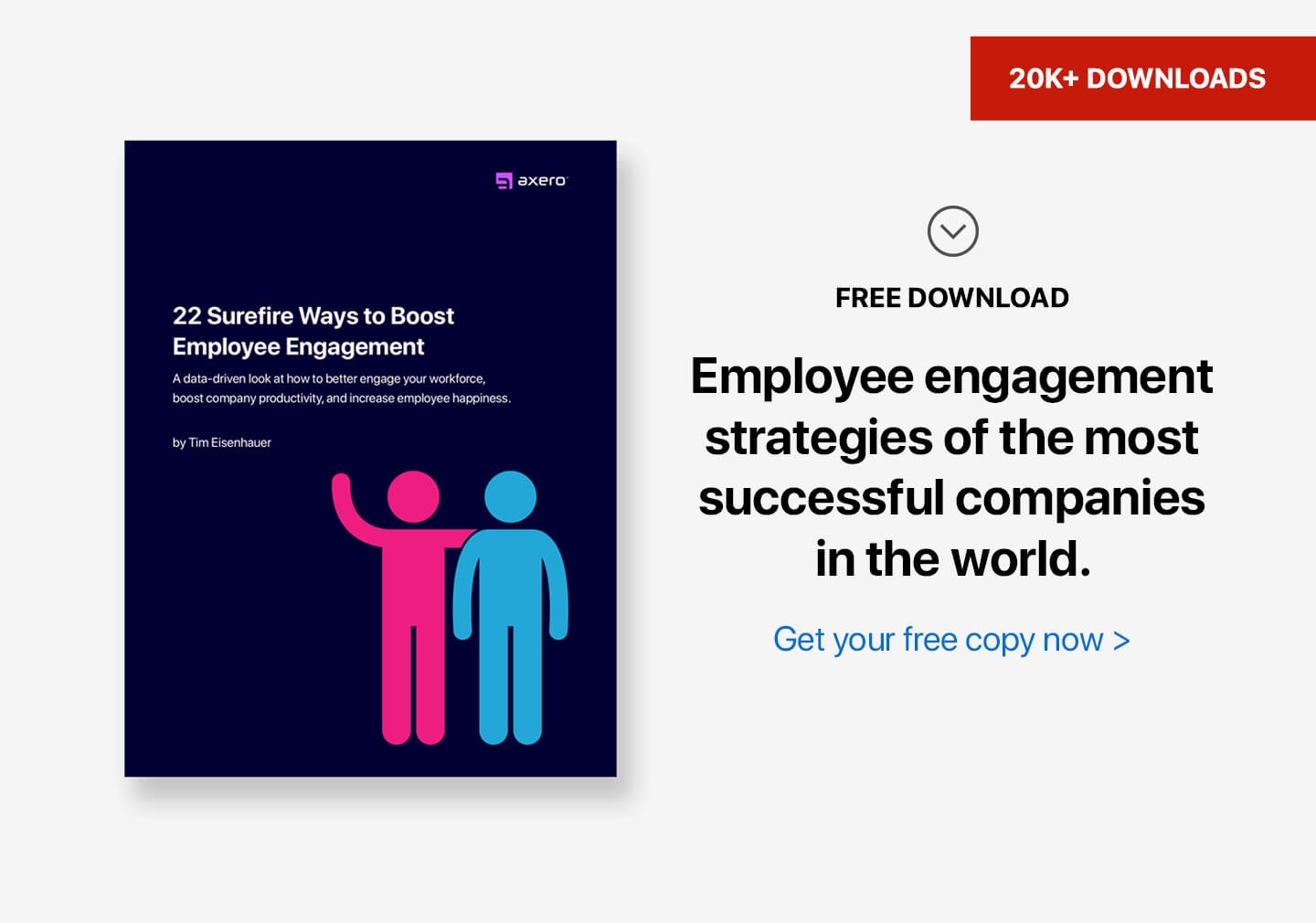Remember our most recent Biggest Challenge at Work? It was “change communications,” fresh from the desk of a Head of Internal Communications. To put ourselves in his shoes, we asked, “What kinds of changes are usually tough to communicate?” We then answered by saying: the bad kind.
The god-awful, wake-me-up-when-this-is-over, I-really-should-update-my-resume kinds of changes. The ones that nobody wants to deal with. These are also the hardest to communicate. Imagine that!
What can a Head of Internal Comms do about that? He doesn’t make the changes. His higher-ups do. Which is why the next biggest complaint of communications folks is “poor leadership.” We will get to it in a couple of posts. In the meantime, they’re stuck with writing the memo.
The Shit Sandwich: A Common Favourite for Business Internal Comms
Breaking the bad news could be a harrowing task, especially if you’ve never done it before. Thankfully, it’s rare that Internal Comms needs to reinvent the wheel. They have a blueprint to follow. It’s called the shit sandwich.
Even if you’ve never heard of a shit sandwich, you’re most likely familiar with its taste and composition. The shit sandwich is a time-honored way to tell people you’ve failed their expectations. And, since any news can disappoint, many companies rely on it for all communications.
A classic example of a shit sandwich is a rejection letter. The kind that first assures that you were an exceptionally qualified candidate, then goes on to “Unfortunately…” before promising to “keep your records on file.”
Here you have all three elements of the shit sandwich:
- Flattering or cheerful opening
- The actual news
- Optimistic conclusion
The fascinating thing about the shit sandwich is that it doesn’t work. So, if yours is a company that shit-sandwiches all of its memos, we might have just solved your biggest internal communications challenge.
Why the shit sandwich fails?
- It insults your employees’ intelligence
- It suggests the news is worse than it seems. Otherwise, why the extra effort to sell the reader? Or the clumsy maneuvering to spare his feelings?
In other words, if your goal is to soften the blow, avoid the shit sandwich. It makes people feel terrible.
Effective Communication Strategies: Straight Talking Vs Sugar Coating
If we are honest with ourselves, the reason we wrap the truth in a protective layer of hogwash has nothing to do with anyone’s feelings but our own. We do it to distance ourselves from those whom we’ve unintentionally let down. It’s how we protect and excuse ourselves from feeling their pain.
When the pain is shared, there is no shit sandwich, we express our regrets and reach out to help. This is what good communication skills look like. For example, if a hurricane hit the office, you wouldn’t start your memo by saying, “Nature is magnificent in all of its forms.” You’d go straight to the damage, how you plan to undo it, and where to get help in the interim, putting into context why developing good communication skills can make such a difference to your team and business.
Real World Examples of Shit Sandwiches:
Now let’s take a different scenario which takes a more direct approach. Health insurance premiums go up, many companies would be tempted to call it a “new health benefit plan” and bury the bad news inside “additional benefits” and “better options.” Instead, being straightforward about the increase and explaining the reasons behind it is much clearer and effective way to communicate.
Why the change of tactic? In the first example with the hurricane, the manager’s conscience is clear. They didn’t appoint the hurricane and were powerless to avert it. In the second example, dancing around the increase to health premiums, shows the company could’ve eaten the cost but chose to pass it on to employees, scrambling to justify itself. How can we minimize our people’s loss? And off it goes, manufacturing a bit of good news here and there to subtract from the bad. This isn’t how communicate effectively and with this example, employee engagement is at risk of suffering because of the way the business has communicated with employees.
In reality, mind games like the shit sandwich are a subtle admission of guilt. Our gut detects it, even as our mind rationalizes it. That’s why a shit sandwich always makes you queasy. You, the reader. And you, the writer.
If the shit sandwich is so bad, then why is it so popular? I guess, as with many other bad things out there, it’s something of a habit. We feel bad-ish. We want to get it over and done with and we can’t think of anything better to write, so we pull out the last year’s open enrollment memo and cut and paste.
Honest and Direct Communication
But we could invest in a new habit. Especially if we are working on communication and are concerned about employee morale and employee engagement. We don’t always have to buy morale with perks and privileges. We can also earn it with straight talk, building relationships, and listening to our teams and responding accordingly based on their feedback.
Developing Good Communication Skills
Developing good communication skills is crucial not only for professional success but also for improving your personal life. Effective workplace communication builds better relationships with your team members and enhances overall team communication. Here are some methods to help you improve your communication skills:
- Practice Active Listening: Make sure you are fully present during conversations. Active listening involves paying close attention to the speaker, understanding their message, responding thoughtfully, and remembering what was said. This applies in both personal interactions and professional settings, including one-on-one meetings and team discussions.
- Understand Body Language: Non-verbal cues such as facial expressions, gestures, and posture play a significant role in communication. Being aware of your body language and reading others’ can enhance understanding and prevent miscommunication.
- Engage in Open Communication: Encourage an environment where team members feel comfortable sharing their thoughts and ideas. Open communication helps in building trust and transparency within the team.
- Use Positive Reinforcement: Recognize and appreciate the efforts and achievements of your team members. Positive feedback can motivate them and reinforce good behavior and performance.
- Utilize Effective Communication Channels: Choose the right medium for your message. Different communication methods such as emails, meetings, or instant messaging can be more effective depending on the context and the audience.
- Conduct One-on-One Meetings: Regular individual meetings with team members can address specific issues, provide personalized feedback, and strengthen your relationship with each team member.
- Promote Team Communication: Encourage collaboration and interaction among team members to build a cohesive unit. Encourage the sharing of ideas and feedback to improve team performance.
- Balance Speaking and Listening: Effective communication involves both the sender and the receiver. Make sure to balance speaking with listening to ensure a two-way communication flow.
By incorporating these practices, you can develop good communication skills that will benefit you in both your professional and personal life. Improving communication within your team can lead to better collaboration, higher morale, and increased productivity.
Let’s go back to the rejection letter for a moment.
Example from history: In 1941, twenty-two-year-old J. D. Salinger submitted his short story, “The Fisherman,” to the New Yorker magazine. Here is the response he received:
Dear Mr. Salinger:
I’m sorry this one doesn’t do. Thanks a lot.
Sincerely yours, John Mosher
Nothing could be more terse and straightforward and yet, would you rather get one of these or the standard shit sandwich variety?
Apparently, Salinger’s morale didn’t suffer. That year he submitted six more short stories to the New Yorker. The last one, “Slight Rebellion Off Madison,” made it in, and Salinger’s writing career took off, showing why ditching the shit sandwich for a more effective communication style is exactly what we should all be doing as leaders.
The Impact of Clear Communication
John Mosher’s rejection letter stands out because it doesn’t contain an ounce of shit. Let’s say he put “thank you” first, as many people would today. Followed by a rejection, the words of gratitude would reek of empty formality, condescending and confusing. Instead, communicating in the way he did, prevents any unintentional cues and moves the current situation to its next stage.
Avoiding Ambiguity in the Workplace
The worst place for ambiguity is the workplace. We understand this on the technical side of things, but we often let moral ambiguities creep into our communication with employees. In doing so, we accomplish one of two things:
- A rift between management and employees can begin to form.
- Moral ambiguity passes as normal and is even necessary in the workplace.
Neither outcome is particularly employee engaging but the second one may be more damaging on the long-term when compared to the first.
Encouraging Honesty and Truth
You want your employees to have a finely tuned bullshit detector. They need it to manage people and projects, handle customers, suppliers, and co-workers, interview job candidates, negotiate deals… the list is endless. You also want to empower them to voice and resolve their suspicions. None of this is likely in a morally ambiguous work environment, which is why, ideally we should avoid our workplace reaching this point.
So, what’s the right way to give bad news to employees?
In the last couple of posts, we’ve been talking about Zappos’ move to self-management. Zappos is world famous for being employee-friendly. At the same time, if there ever was a hard to swallow mega-change to the regular order of business, self-management would be it. However, Zappos CEO Tony Hsieh is determined to see it through.
His latest push came in March 2015 in the form of a company-wide memo. Tony clearly gave it a lot of thought. Many business sites, such as Fast Company and Quartz, published the 4,572-word memo in its entirety. It’s a good example of being thorough, honest, and direct about something your people are not going to like, this is exactly what effective workplace communication looks like.
Nothing in this memo reads like a shit sandwich. Maybe a thin crust shit pizza if you really had to pick it apart. He starts by saying:
“This is a long email. Please take 30 minutes to read through the email in its entirety.”
The body of the email is a brain dump of Tony’s management philosophy, his analysis of the company’s recent past, and the transition steps towards his goal. He ends with:
“I can’t wait to see how we reinvent ourselves, and I can’t wait to see what unfolds next.”
That’s all the pep talk you’ll see in the entire email—remarkable for someone who’s facing a tough crowd inside and outside of his company. There are mixed reports on how the Zappos self-management project is coming along. If they ever pull it off, it will be very much thanks to Tony’s ability to say what he means and mean what he says.
Strategies and Benefits of Effective Internal Communication
Start with the bad news, especially if it’s on people’s minds. During an earnings call, many CEOs will go straight to the problems, because investors need to understand the risks they are facing. If you don’t immediately respond to your audience’s needs, you forfeit their trust and with their trust gone, so does their money.
Talking to employees is not that different. Just because people don’t quit their jobs upon being served a shit sandwich doesn’t mean the company can’t lose their support. A company’s market value is all the investors’ money pooled together. But its real value—and the reason investors invest—comes from the individual contributions every employee makes each day. Can you count on them if you don’t have their trust?
You can sell your employees an uplifting message but you won’t get there by ignoring their reality and disconnecting from their feelings. You can’t lead when nobody is following. Understand and connect with your people first. Skills like active listening and understanding body language can pay dividends in preventing poor communication at your workplace.
_____
Craving more unfiltered advice? If you like straight talk, you might like my book, because it’s the only kind I use. My book is your ultimate guide to honest communication and workplace success. Get it today!












 info@axerosolutions.com
info@axerosolutions.com 1-855-AXERO-55
1-855-AXERO-55


